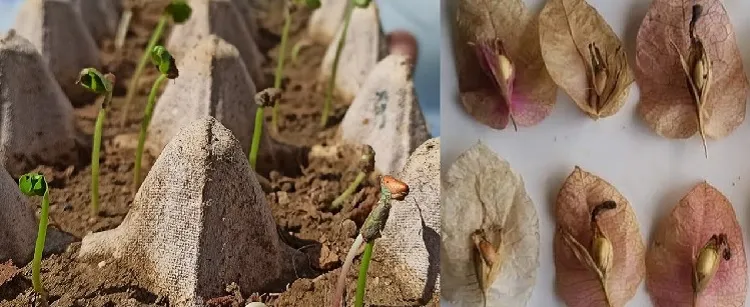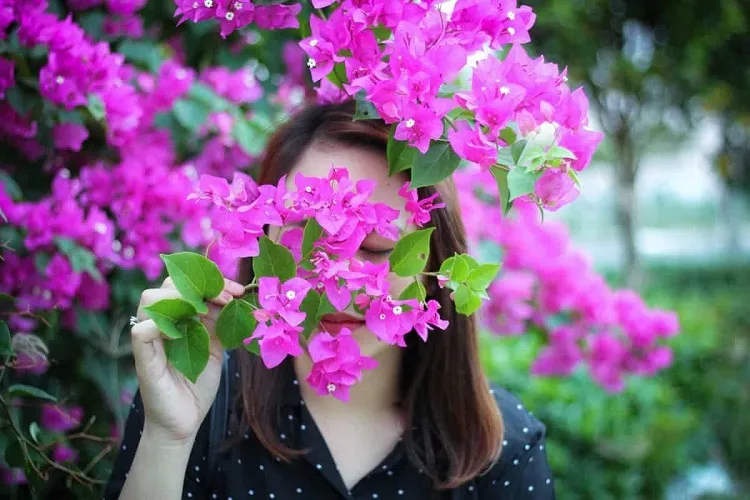Bougainvillea is a loved plant for its bright colors, which bring a flair of unique and tropical beauty to your garden, home or balcony. These vine-like shrubs are quite drought tolerant, love the full sun, and with just a little care, they burst in joyful flowers for a long period. Bougainvillea thrive effortlessly in areas with mild winter, but can be grown in containers elsewhere. They develop vigorously and can become overgrown if not kept in check, but to grow them from seeds or cuttings requires a little more special care. Continue reading to reveal how to propagate bougainvillea from seed or cuttings, and some useful tips on the way you can prolong its life.
Can I Grow Bougainvillea from a Cutting?
Growing from cuttings is a popular method to develop new plants, which allows you to replicate your favorite varieties. Here’s the way how to propagate bougainvillea successfully:
- Take your cutting from a healthy stem: Choose a mature stem, 6-8 in (15-20 cm) long, with a few nodes. Cut your cutting from the stem, just below a node, with pruning shears. Remove the lower leaves, leaving only a few ones at the top.
- Insert the cutting in a soil mixture: Fill a small pot or container with a well-draining soil mixture. Make a hole in the soil with a pencil or your finger and put the cutting there, ensuring the lower nodes are under the planting surface. Gently firm the soil around the stem.
- Care for the plant patiently: Place the potted cutting in a warm, bright location, avoiding direct sunlight. Maintain a consistently moist soil, though not overwatered. Once the roots are established over the next few weeks, it’s time to transplant the young plants into a larger container or in your garden.
Do Cuttings Grow Better in Water or Soil?
If you are a beginner in gardening or flower lover, of course, you start wondering how to propagate bougainvillea cuttings in the best way. While it is possible to grow them in both water and soil, the more successful cases of planting are usually when you put the stem parts in a well-draining soil mixture. When placed in water, cuttings tend to develop roots more slowly and are more often prone to rotting. In contrast, planting directly in soil provides good aeration and, subsequently, better root development.
How to Propagate Bougainvillea from Seed?
Growing this stunning plant from seeds is another applicable option, though it requires a bit more patience. Here are the tips how to propagate bougainvillea by this method:
- Take and treat the seeds: Collect seeds from a mature plant. Remove their outer coatings, then clean and dry them carefully before sowing. To improve germination rates, you can scarify the seeds by gently scratching their surfaces with sandpaper. Soaking them in water for 24 hours can also help their germination.
- Sow the seeds in a prepared soil: Fill small pots with a well-draining potting mix. Then moisten the soil mixture and sow your seeds. Sprinkle them over the soil surface and lightly press them in. Finally, cover the containers with a clear plastic wrap for a humid environment.
- Care for germination: Place the containers in a warm area with indirect light. Keep the soil consistently moist, while not waterlogged. Germination can take from several weeks to a couple of months, so you should be patient. Once the seedlings have developed a few sets of leaves, they can be transplanted into individual pots.
What is the Lifespan of a Bougainvillea
Bougainvillea can live 20 to 30 years, or even longer. Its lifespan vary depending on the variety and growing conditions. You can expand the longevity of your plant, considering that it requires full sun for an optimal growth. They prefer well-draining soil with good airflow around the roots. While bougainvilleas are drought-tolerant, young plants still need regular watering. However, too much moisture can lead to root rot, so allow the soil to dry out between waterings. Regular pruning is another favorable factor. The best pruning time is after each blooming cycle, when you should remove dead or diseased branches. Bougainvillea will benefit from regular fertilization if you want to support it to bloom. Use a balanced, slow-release fertilizer. And another important factor to consider is that this plant is sensitive to frost and low temperatures. So if you live in a colder climate, plant it in a container, as you can bring it indoors during the cold months or cover with protective materials.
Finally, it should be noted that Bougainvilleas are generally hardy plants, but can occasionally be susceptible to pests such as aphids, white flies, or mealybugs. So, if you notice any signs of infestation, use insecticidal soaps or horticultural oils to control the pests. Also, be mindful of fungal diseases like powdery mildew and treat them promptly.
Read also: Best Plants for Sunny Balcony: Feast Your Eyes on this Explosion of Colors and Greenery
And: Does Bougainvillea Damage Walls? Whether the Flower’s Pros Can Compensate for Its Cons?





